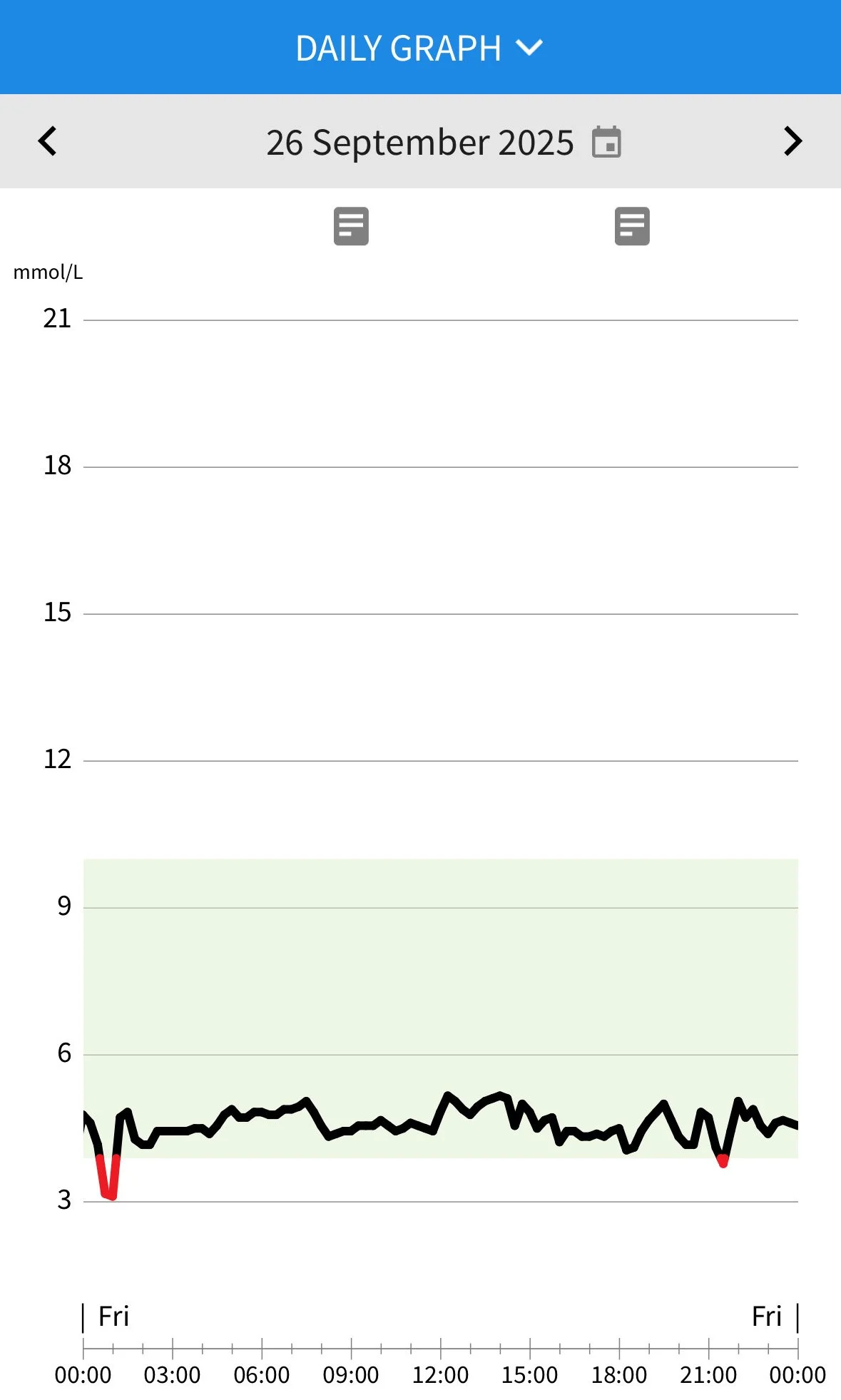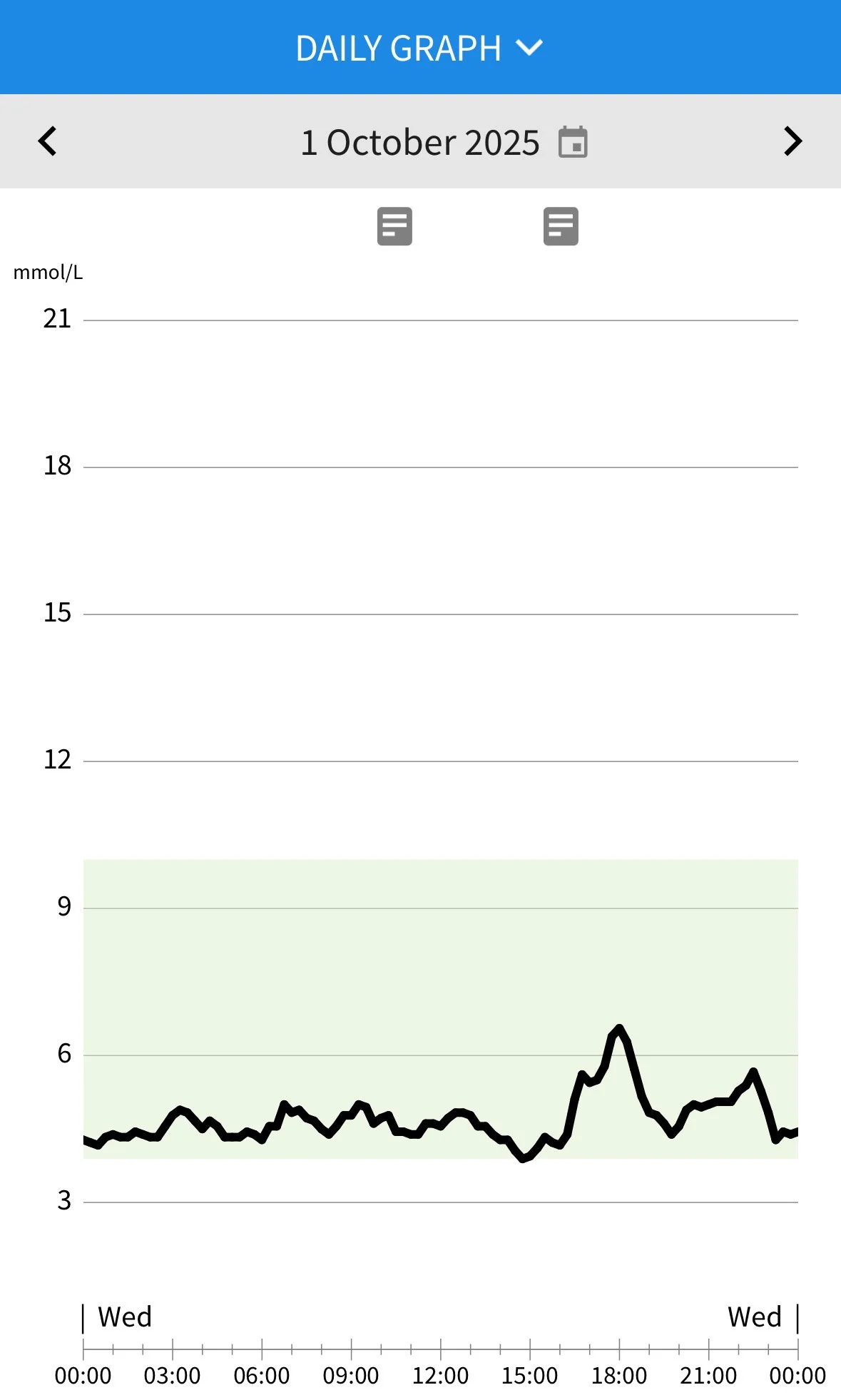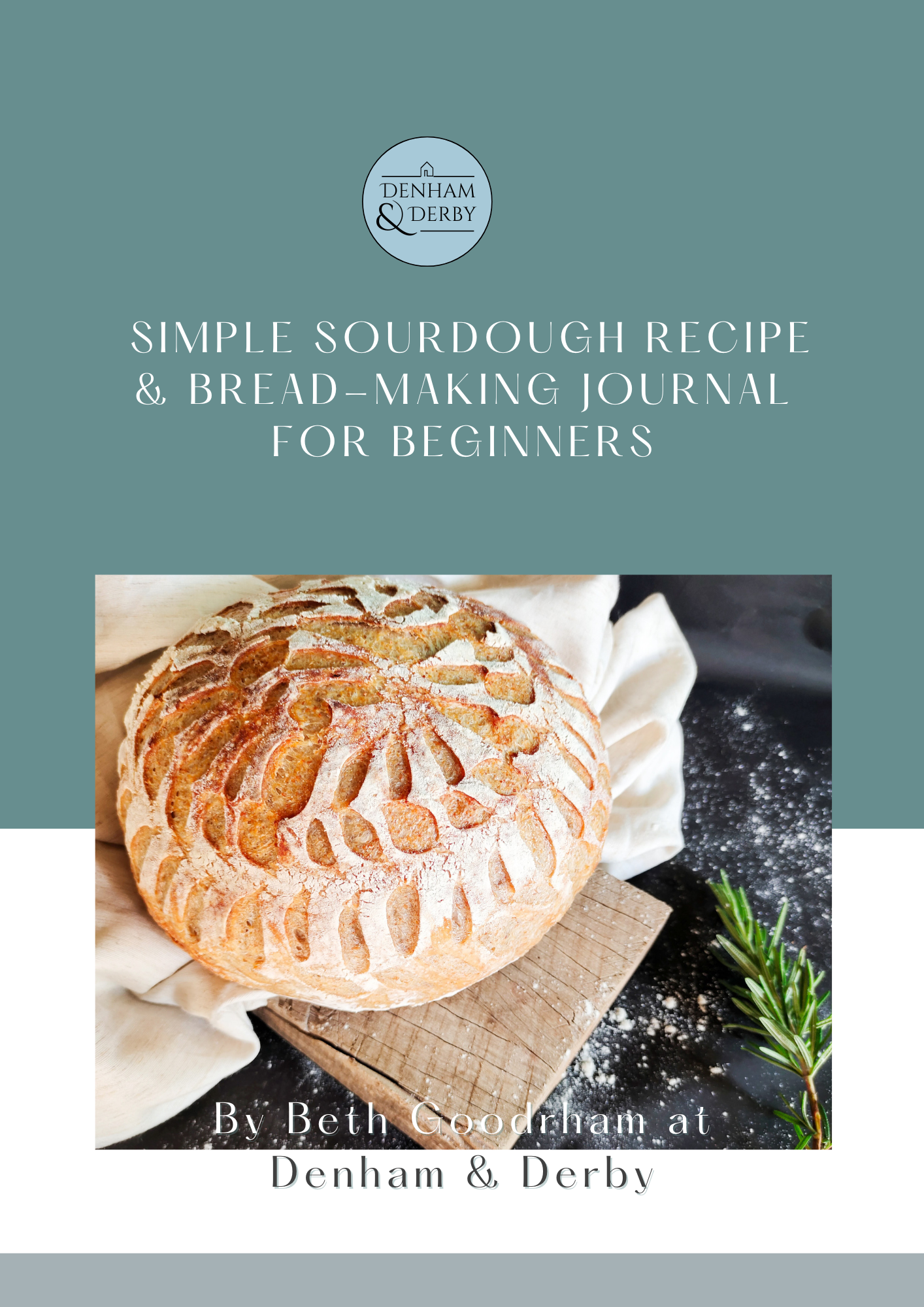My Glucose Monitor Sensor Tell-All: Sugar Spikes & Sweet Chaos
My Glucose Monitor Tell-All: Shocking Results from My Health and Lifestyle Biohacking Experiment
If I’m honest, I didn’t expect to fall down quite such a fascinating rabbit hole when I agreed to wear a glucose monitor sensor for two weeks - but checking your levels quickly becomes very compelling!
As part of a year-long health programme I’d joined, I was asked to track my blood sugar levels continuously. It was something I’d been considering anyway, so doing it under medical supervision felt like the perfect opportunity to learn more about how my body responds to the sugar in my food.
About two and a half years ago now, I adopted a low sugar/keto diet and I was hoping that my results would reflect this. However, there was a certain amount of trepidation involved. During those two and a half years I’d sometimes wondered whether my sugar levels were dipping too low, or whether it meant that I was lower on energy and really, when people were saying to me: “Oh please have a piece of cake, it will do you good” were they actually right?
[Just to note: if you’d like to find out more about what following a keto diet involves, I have a podcast episode on it here. It’s my most listened to episode by far!]
High Calories vs. Sugar Spikes: There is a difference!
Wearing a glucose monitor sensor wasn’t about losing weight or counting calories — it was about understanding how my blood sugar behaves and how to keep it as steady as possible throughout the day.
Following the type of lifestyle that I do, I was well aware that calories and glucose spikes aren’t the same thing & this wasn’t about living of lettuce leaves for two weeks. That wasn’t the point at all!
For example it’s possible to eat high-calorie foods, like cheese & nuts, that don’t cause a big rise in blood sugar, while a relatively low-calorie snack (like a rice cake or banana) might send your glucose soaring. This experiment was about finding out whether I was doing as good a job as I hoped, as well as collecting data for future use.
My target range was between 3.9 and 10 mmol/L, and I wanted data that would help me understand what was happening even when I wasn’t wearing the sensor.
Why is knowing your glucose levels important and what conditions can low glucose levels guard against?
Maintaining lower, stable glucose levels within a healthy range — rather than frequent spikes — is associated with protection against several chronic diseases.
Here’s a breakdown:
1. Type 2 Diabetes
How it helps: Consistently lower, steady glucose levels reduce insulin resistance — the key driver of type 2 diabetes.
Why: Fewer glucose spikes mean less demand on the pancreas to produce insulin, helping maintain metabolic health over time.
2. Cardiovascular Disease
How it helps: Lower glucose variability improves lipid profiles, reduces oxidative stress, and minimizes arterial inflammation.
Why: High glucose levels promote glycation (damage to blood vessels) and inflammation, increasing risk of heart disease, stroke, and atherosclerosis.
3. Cognitive Decline and Alzheimer’s ("Type 3 Diabetes")
How it helps: Stable, lower glucose and insulin levels support brain metabolism and reduce neuroinflammation.
Why: Chronic high glucose impairs insulin signaling in the brain, linked to memory loss and cognitive decline.
4. Polycystic Ovary Syndrome (PCOS)
How it helps: Improved insulin sensitivity from lower glucose helps regulate hormones and menstrual cycles.
Why: Insulin resistance can drive excess androgen production in women with PCOS, worsening symptoms.
5. Cancer (Certain Types)
How it helps: Tumor cells often thrive on glucose; maintaining healthy, lower glucose and insulin levels may reduce growth signals.
Why: Insulin and IGF-1 (insulin-like growth factor) are growth-promoting hormones that can fuel tumor development.
6. Chronic Inflammation
How it helps: Lower post-meal glucose spikes reduce inflammatory cytokines.
Why: High glucose leads to oxidative stress and inflammatory responses that underlie many modern chronic diseases.
7. Metabolic Syndrome
How it helps: Stable glucose levels prevent the cluster of insulin resistance, hypertension, and high triglycerides.
Why: It keeps metabolism flexible and efficient, preventing fat accumulation around organs (visceral fat).
8. Premature Aging
How it helps: Lower glucose means less glycation — the process that damages collagen and DNA.
Why: Glycation end-products (AGEs) accelerate aging of skin, eyes, and blood vessels.
In Summary:
Maintaining low but healthy glucose levels (typically fasting 4.0–5.3 mmol/L or 72–95 mg/dL) and avoiding large post-meal spikes can help guard against:
Type 2 diabetes
Heart disease
Alzheimer’s disease
PCOS
Some cancers
Chronic inflammation
Metabolic syndrome
Accelerated aging
The Glucose Monitor Sensor Itself
I used the FreeStyle Libre 2 System which is the same one many diabetics use. It’s a small circular patch that sticks painlessly to the back of your upper arm and connects to an app via Bluetooth, meaning that you can monitor your levels via your phone (provided they’re close enough to one another.)
Once I downloaded the app, I watched a few YouTube videos to get the hang of the different features — from checking current readings to viewing a live graph that looked like a heartbeat monitor. There was also a bar chart showing my weekly averages and a low-glucose alarm that alerted me when I dropped below my target range.
The advice was not to immerse the glucose monitor sensor in water for too long, so I kept my arm out of my cold dipping pod. But it was fine in the shower and more recently I’ve seen someone wearing one when swimming. When I next repeat the experiment, I will double check to see whether it is OK for me to swim when wearing one.
My Testing Approach
I had four goals in mind:
Understand what my glucose does during an average week
See how I react to different foods
Gather information I could use once I stopped wearing the sensor
Discover how my medical team would interpret my results
Week 1: My Usual Diet
In the first week, I simply ate my normal diet and didn’t do anything experimental. My readings were pretty flat throughout the day (see the graph below) My low glucose alarm went off a few times during that first week and sometimes during the night, my glucose levels were below my target range for quite some time.
Ignoring the red dips - which occurred during the night - my readings varied between 3.9 and 5.7. My understanding is that this is what we’re aiming for - a nice steady rate throughout the day.
Week 2: Experiment Time
For a 3 day period in week two, I decided to have some fun and test a few foods. I decided to test them during the afternoon and at rougly the same time of day, so that my morning results weren’t ever interfered with. And I only tested things I would genuinely choose to eat from time to time.
Test 1: The Cream Slice
My first experiment was with a cream slice from M&S. It had pastry top and bottom, jam, cream, and a layer of icing. I ate it on an empty stomach and my glucose spiked massively from 4.5 to 9.3 mmol/L in just 1.5 hours. I was shocked to see how quickly it went up. But less than two hours later, it had dropped back to 4.8. I found the speed with which my glucose levels both spiked, and then dropped, intriguing and was interested to find out more…
Test 2: The Brownie
The following day I tried a brownie. I was interested to see whether eating it would cause my glucose to exceed the 9.3 mmol/L peak of the previous day. I assumed without a doubt that it would. Having made brownies many times over the years, I know just how much sugar is in them - but I do love a good brownie from the Boston Tea Party once in a while.
But, to my surprise, my glucose levels only rose from 4.4 to 6.7. I couldn’t figure this out to start with but then concluded that the reason for this must have been because I’d already had lunch (so I wasn’t starting from empty) and because it was made without flour, which is a carbohydrate and therefore a form of sugar.
Test 3: The Cream Slice (Again!)
On the third day - and yes I was getting a bit sick of eating cakes by now but it was all in the name of research 🤣 - I repeated the cream slice test. I mean there were two in a packet so it was a shame to waste one! But this time I ate it after I’d had my lunch. This time my glucose levels only went from 4.9 to 7.5, which was significantly lower than the 9.3mmol/L peak I saw after eating the cream slice on an empty stomach.
Although I was aware that eating high glucose foods on empty stomach could create a spike, I had no idea to what extent. But logically I guess it’s the same as drinking milk to line your stomach before having an alcoholic drink.
A Quick Recap
These are the main things that I realised when I introduced glucose-spiking foods into the mix:
The same food can cause very different spikes depending on what you’ve eaten beforehand.
Empty stomach = faster, higher spike.
Full stomach = smaller, slower rise.
Foods That Didn’t Spike My Glucose
To my delight, several of my favourite things didn’t budge the needle at all:
Diet Coke
Prosecco Brut
Electrolytes
Keto cake
I did notice minor spikes with dark chocolate almonds and Tru-Fru (frozen chocolate-covered fruit), but nothing dramatic.
My Observations
Eating first helps prevent sharp glucose spikes.
The cream cake REALLY surprised me. True, there’s sugar in the icing but the cream shouldn’t cause a spike and there’s only a small amount of jam in it.
The brownie surprised me — I was sure it would spike much higher - and was kind of disappointed when it didn’t!
It takes a good couple of hours for glucose levels to peak but they drop quickly afterwards.
When glucose dips too low, your body releases adrenaline to raise the glucose levels again.
I didn’t feel a noticeable sugar “high” or “crash” so I’m not sure to what extent that’s a bit of a misnomer (for me at least!)
Sometimes I noticed that my glucose levels dropped slightly AFTER eating.
My glucose didn’t ever go as low in week two (after I’d had the cream cakes/brownie) as it did in week one, so I wonder whether there’s some residual effect of having had more glucose in week 2.
My Results
Over the two weeks, my average glucose level was 4.9 mmol/L, with minimal variation between highs and lows, which my Doctor was super happy with.
My glucose variability was 11.5%, well below the target of 36%. I was thrilled with that result!
As I mentioned above, my goals were to:
Understand what my glucose does during an average week
See how I react to different foods
Gather information I could use once I stopped wearing it
Discover how my medical team would interpret my results
All of these I felt that I achieved by wearing the glucose monitor sensor for a two week period and it was probably one of the most useful things that I have ever done in relation to my health. It really does take the guess work out of things!
Why You Might Want to Try a Glucose Monitor Sensor
Wearing a glucose monitor sensor gives you an incredible window into how your body reacts to food, exercise, and stress. You don’t have to be diabetic to benefit — it’s one of the most insightful biohacking tools you can try - and you know me, I’m all about a good biohack!
Stable glucose levels can help with:
Reducing energy crashes
Improving focus
Supporting hormone balance
Guarding against insulin resistance and metabolic issues
If you’re curious, I’d wholeheartedly recommend giving it a go for a couple of weeks. You’ll learn more about your body in 14 days than you might from years of guesswork.
Final Thoughts
This little experiment was genuinely eye-opening. It gave me so much insight into how my body handles sugar — and confirmed that the way I’ve been eating really works for me.
If you’d like to see exactly what I ate during that first week (the meals that kept my glucose levels lovely and low), you can download my printable guide from the Beth Goodrham Studio on Etsy. It’s full of easy, balanced meal ideas and makes a great friend for anyone thinking of trying a glucose monitor sensor themselves.
Here’s to steady energy, calmer cravings, and a little bit of biohacking curiosity.
If this post gave you a little inspiration, or food for thought, please feel free to save it to Pinterest or share it with a friend who might be interested in finding out how their blood sugar levels react to different types of foods.
And if you’d like any of my free guides on sourdough making, cold water plunging or saunas, you can find them below.
And if you have any questions, please feel free to pop a message below, or come and find me on Instagram at BethGoodrham
Have a super week,
Much love,
Beth x








